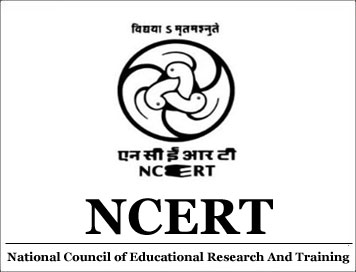
NCERT Biology Question Paper (Class - 11)
(Biology) Chapter 1 The Living World
Question 1: Why are living organisms classified?
Question 2: Why are the classification systems changing every now and then?
Question 3: What different criteria would you choose to classify people that you meet often?
Question 4: What do we learn from identification of individuals and populations?
Question 5: Given below is the scientific name of Mango. Identify the correctly written name. Mangifera Indica
Question 6: Define a taxon. Give some examples of taxa at different hierarchical levels.
Question 7: Can you identify the correct sequence of taxonomical categories?
(a) Species → Order → Phylum → Kingdom
(b) Genus → Species → Order → Kingdom
(c) Species → Genus → Order → Phylum
Question 8: Try to collect all the currently accepted meanings for the word ‘species’. Discuss with your teacher the meaning of species in case of higher plants and animals on one hand and bacteria on the other hand.
Question 9: Define and understand the following terms: (i) Phylum (ii) Class (iii) Family (iv) Order (v) Genus
Question 10: How is a key helpful in the identification and classification of an organism?
Question 11: Illustrate the taxonomical hierarchy with suitable examples of a plant and an animal.
(Biology) Chapter 2 Biological Classification
Question 1: Discuss how classification systems have undergone several changes over a period of time?
Question 2: State two economically important uses of:
(a) Heterotrophic bacteria
(b) Archaebacteria
Question 3: What is the nature of cell-walls in diatoms?
Question 4: Find out what do the terms ‘algal bloom’ and ‘red-tides’ signify.
Question 5: How are viroids different from viruses?
Question 6: Describe briefly the four major groups of Protozoa.
Question 7: Plants are autotrophic. Can you think of some plants that are partially heterotrophic?
Question 8: What do the terms phycobiont and mycobiont signify?
Question 9: Give a comparative account of the classes of Kingdom Fungi under the following:
(i) Mode of nutrition
(ii) Mode of reproduction
Question 10: What are the characteristic features of Euglenoids?
Question 11: Give a brief account of viruses with respect to their structure and nature of genetic material. Also name four common viral diseases.
Question 12: Organise a discussion in your class on the topic- Are viruses living or non-living?
Question 1: Name the parts of an angiosperm flower in which development of male and femalegametophyte take place.
Question 2: Differentiate between microsporogenesis and megasporogenesis. Which type of celldivision occurs during these events? Name the structures formed at the end of thesetwo events.
Question 3: Arrange the following terms in the correct developmental sequence: Pollen grain, sporogenous tissue, microspore tetrad, pollen mother cell, male gametes
Question 4: With a neat, labelled diagram, describe the parts of a typical angiosperm ovule.
Question 5: What is meant by monosporic development of female gametophyte?
(Biology) Chapter 3 Plant Kingdom
Question 1: What is the basis of classification of algae?
Question 2: When and where does reduction division take place in the life cycle of a liverwort, a moss, a fern, a gymnosperm and an angiosperm?
Question 3: Name three groups of plants that bear archegonia. Briefly describe the life cycle of any one of them.
Question 4: Mention the ploidy of the following: protonemal cell of a moss; primary endosperm nucleus in dicot, leaf cell of a moss; prothallus cell of a fern; gemma cell in Marchantia; meristem cell of monocot, ovum of a liverwort, and zygote of a fern.
Question 5: Write a note on economic importance of algae and gymnosperms.
Question 6: Both gymnosperms and angiosperms bear seeds, then why are they classifiedseparately?
Question 7: What is heterospory? Briefly comment on its significance. Give two examples.
Question 8: Explain briefly the following terms with suitable examples:-
(i) protonema
(ii) antheridium
(iii) archegonium
(iv) diplontic
(v) sporophyll
(vi) isogamy
Question 9: Differentiate between the following:-
(i) red algae and brown algae
(ii) liverworts and moss
(iii) homosporous and heterosporous pteridophyte
(iv) syngamy and triple fusion
Question 10: How would you distinguish monocots from dicots?
Question 11: Describe the important characteristics of gymnosperms.
(Biology) Chapter 4 Animal Kingdom
Question 1: What are the difficulties that you would face in classification of animals, if common fundamental features are not taken into account?
Question 2: If you are given a specimen, what are the steps that you would follow to classify it?
Question 3: How useful is the study of the nature of body cavity and coelom in the classification of animals?
Question 4: Distinguish between intracellular and extracellular digestion?
Question 5: What is the difference between direct and indirect development?
Question 6: What are the peculiar features that you find in parasitic platyhelminthes?
Question 7: What are the reasons that you can think of for the arthropods to constitute the largest group of the animal kingdom?
Question 8: Water vascular system is the characteristic of which group of the following:
(a) Porifera
(b) Ctenophora
(c) Echinodermata
(d) Chordata
Question 9: “All vertebrates are chordates but all chordates are not vertebrates”. Justify thestatement.
Question 10: How important is the presence of air bladder in Pisces?
Question 11: What are the modifications that are observed in birds that help them fly?
Question 12: Could the number of eggs or young ones produced by an oviparous and viviparousmother be equal? Why?
Question 13: Segmentation in the body is first observed in which of the following:
(a) Platyhelminthes
(b) Aschelminthes
(c) Annelida
(d) Arthropoda
Question 14: Match the following:
Question 15: Prepare a list of some animals that are found parasitic on human beings.
(Biology) Chapter 5 Morphology of Flowering Plants
Question 1: What is meant by modification of root? What type of modification of root is found in the
(a) Banyan tree
(b) Turnip
(c) Mangrove trees
Question 2: Justify the following statements on the basis of external features
(i) Underground parts of a plant are not always roots
(ii) Flower is a modified shoot
Question 3: How is pinnately compound leaf different from palmately compound leaf?\
Question 4: Explain with suitable examples the different types of phyllotaxy?
Question 5: Define the following terms:
(a) Aestivation
(b) Placentation
(c) Actinomorphic
(d) Zygomorphic
(e) Superior ovary
(f) Perigynous flower
(g) Epipetalous Stamen
Question 6: Differentiate between
(a) Racemose and cymose inflorescence
(b) Fibrous roots and adventitious roots
(c) Apocarpous and syncarpous ovary
Question 7: Draw the labelled diagram of the following:
(i) Gram seed
(ii) V.S. of maize seed
Question 8: Describe modifications of stem with suitable examples
Question 9: Take one flower each of families Fabaceae and Solanaceae and write its semitechnical description. Also draw their floral diagrams after studying them.
Question 10: Describe the various types of placentations found in flowering plants.
Question 11:What is a flower? Describe the parts of a typical angiosperm flower?
Question 12: How do the various leaf modifications help plants?
Question 13: Define the term inflorescence. Explain the basis for the different types of inflorescence in flowering plants.
Question 14: Write the floral formula of an actinomorphic bisexual, hypogynous flower with five united sepals, five free petals. Five free stamens and two united carpals with superior ovary and axile placentation.
Question 15: Describe the arrangement of floral members in relation to their insertion on thalamus?
(Biology) Chapter 6 Anatomy of Flowering Plants
Question 1: State the location and function of different types of meristem.
Question 2: Explain the process of secondary growth in stems of woody angiosperm with help of schematic diagrams. What is the significance?
Question 3: Draw illustrations to bring out anatomical difference between (a) Monocot root and dicot root (b) Monocot stem and dicot stem
Question 4: Cut a transverse section of young stem of a plant from your school garden andobserve it under the microscope. How would you ascertain whether it is a monocotstem or dicot stem? Give reasons.
Question 5: The transverse section of a plant material shows the following anatomical features,
(a) the vascular bundles are conjoint, scattered and surrounded by sclerenchymatous bundle sheaths (b) phloem parenchyma is absent. What will you identify it as?
Question 6: Why are xylem and phloem called complex tissues?
Question 7: What is stomatal apparatus? Explain the structure of stomata with a labelled diagram.
Question 8: How is the study of plant anatomy useful to us?
Question 9: Describe the internal structure of a dorsiventral leaf with the help of labelled diagrams.
(Biology) Chapter 7 Structural Organization in Animals
Question 1: Answer in one word or one line
(i) Give the common name of Periplaneta americana.
(ii) How many spermathecae are found in earthworm?
(iii) What is the position of ovaries in the cockroach?
(iv) How many segments are present in the abdomen of cockroach?
(v) Where do you find malphigian tubules?
Question 2: Answer the following:
(i) What is the function of nephridia?
(ii) How many types of nephridia are found in earthworm based on their location?
Question 3: Draw a labelled diagram of the reproductive organs of an earthworm.
Question 4: Draw a labelled diagram of alimentary canal of a cockroach.
Question 5: Distinguish between the following
(a) Prostomium and peristomium
(b) Septal nephridium and pharyngeal nephridium
Question 6: What are the cellular components of blood?
Question 7: What are the following and where do you find them in animal body
(a) Chondriocytes
(b) Axons
(c) Ciliated epithelium
Question 8: Describe various types of epithelial tissues with the help of labelled diagrams.
Question 9: Distinguish between
(a) Simple epithelium and compound epithelium.
(b) Cardiac muscle and striated muscle
(c) Dense regular and dense irregular connective tissues(d) Adipose and blood tissue
(e) Simple gland and compound gland
Question 10: Mark the odd one in each series:
(a) Areolar tissue; blood; neuron; tendon
(b) RBC; WBC; platelets; cartilage
(c) Exocrine; endocrine; salivary gland; ligament
(d) Maxilla; mandible; labrum; athorax; coxa
Question 11: Mention briefly about the circulatory system of earthworm
Question 12: Draw a neat diagram of digestive system of frog.
Question 13: Mention the function of the following
(a) Ureters in frog
(b) Malpighian tubules
(c) Body wall in earthworm
(Biology) Chapter 8 Cell The Unit of Life
Question 1: Which of the following is not correct?
(a) Robert Brown discovered the cell.
(b) Schleiden and Schwann formulated the cell theory.
(c) Virchow explained that cells are formed from pre-existing cells.
(d) A unicellular organism carries out its life activities within a single cell.
Question 2: New cells generate from
(a) bacterial fermentation
(b) regeneration of old cells
(c) pre-existing cells
(d) abiotic materials
Question 3: Match the following
(a) Cristae (i) Flat membranous sacs in stroma
(b) Cisternae (ii) Infoldings in mitochondria
(c) Thylakoids (iii) Disc-shaped sacs in Golgi apparatus
Question 4: Which of the following is correct:
(a) Cells of all living organisms have a nucleus.
(b) Both animal and plant cells have a well defined cell wall.
(c) In prokaryotes, there are no membrane bound organelles.
(d) Cells are formed de novo from abiotic materials.
Question 5: What is a mesosome in a prokaryotic cell? Mention the functions that it performs.
Question 6: How do neutral solutes move across the plasma membrane? Can the polar molecules also move across it in the same way? If not, then how are these transported across the membrane?
Question 7: Name two cell-organelles that are double membrane bound. What are the characteristics of these two organelles? State their functions and draw labelled diagrams of both.
Question 8: What are the characteristics of prokaryotic cells?
Question 9: Multicellular organisms have division of labour. Explain.
Question 10: Cell is the basic unit of life. Discuss in brief.
Question 11: What are nuclear pores? State their function.
Question 12: Both lysosomes and vacuoles are endomembrane structures, yet they differ in terms of their functions. Comment.
Question 13: Describe the structure of the following with the help of labelled diagrams. (i) Nucleus (ii) Centrosome
Question 14: What is a centromere? How does the position of centromere form the basis of classification of chromosomes. Support your answer with a diagram showing the position of centromere on different types of chromosomes.
(Biology) Chapter 9 Bimolecular
Question 1: What are macromolecules? Give examples.
Question 2: Illustrate a glycosidic, peptide and a phospho-diester bond.
Question 3: What is meant by tertiary structure of proteins?
Question 4: Find and write down structures of 10 interesting small molecular weight biomolecules. Find if there is any industry which manufactures the compounds by isolation. Find out who are the buyers.
Question 5: Proteins have primary structure. If you are given a method to know which amino acid is at either of the two termini (ends) of a protein, can you connect this information to purity or homogeneity of a protein?
Question 6: Find out and make a list of proteins used as therapeutic agents. Find other applications of proteins (e.g., cosmetics, etc.)
Question 7: Explain the composition of triglyceride.
Question 8: Can you describe what happens when milk is converted into curd or yoghurt from your understanding of proteins.
Question 9: Can you attempt building models of biomolecules using commercially available atomic models (Ball and Stick models).
Question 10: Attempt titrating an amino acid against a weak base and discover the number of dissociating ( ionizable ) functional groups in the amino acid.
Question 11: Draw the structure of the amino acid, alanine.
Question 12: What are gums made of? Is Fevicol different?
Question 13: Find out a qualitative test for proteins, fats and oils, amino acids and test any fruit juice, saliva, sweat and urine for them.
Question 14: Find out how much cellulose is made by all the plants in the biosphere and compare it with how much of paper is manufactured by man and hence what is the consumption of plant material by man annually. What a loss of vegetation!
Question 15: Describe the important properties of enzymes.
(Biology) Chapter 10 Cell Cycle and Cell Division
Question 1: What is the average cell cycle span for a mammalian cell?
Question 2: Distinguish cytokinesis from karyokinesis.
Question 3: Describe the events taking place during interphase.
Question 4: What is G (quiescent phase) of cell cycle?
Question 5: Why is mitosis called equational division?
Question 6: Name the stage of cell cycle at which one of the following events occur:
(i) Chromosomes are moved to spindle equator
(ii) Centromere splits and chromatids separate
(iii) Pairing between homologous chromosomes takes place
(iv) Crossing over between homologous chromosomes takes place
Question 7: Describe the following:
(a) synapsis
(b) bivalent
(c) chiasmata
Draw a diagram to illustrate your answer.
Question 8: How does cytokinesis in plant cells differ from that in animal cells?
Question 9: Find examples where the four daughter cells from meiosis are equal in size and where they are found unequal in size.
(a) Spermatogenesis or the formation of sperms in human beings occurs by the process of meiosis. It results in the formation of four equal-sized daughter cells.
(b) Oogenesis or the formation of ovum in human beings occurs by the process of meiosis. It results in the formation of four daughter cells which are unequal in size.
Question 10 : Distinguish anaphase of mitosis from anaphase I of meiosis.
Question 11: List the main differences between mitosis and meiosis.
Question 12: What is the significance of meiosis?
Question 13: Discuss with your teacher about
(i) haploid insects and lower plants where cell-division occurs, and
(ii) some haploid cells in higher plants where cell-division does not occur.
Question 14: Can there be mitosis without DNA replication in S phase?
Question 15: Can there be DNA replication without cell division?
Question 16: Analyse the events during every stage of cell cycle and notice how the following two parameters change
(i) Number of chromosomes (N) per cell
(ii) Amount of DNA content (C) per cell

(Biology) Chapter 11 Transport in Plants
Question 1: What are the factors affecting the rate of diffusion?
Question 2: What are porins? What role do they play in diffusion?
Question 3: Describe the role played by protein pumps during active transport in plants.
Question 4: Explain why pure water has the maximum water potential.
Question 5: Differentiate between the following:
(a) Diffusion and Osmosis
(b) Transpiration and Evaporation
(c) Osmotic Pressure and Osmotic Potential
(d) Imbibition and Diffusion
(e) Apoplast and Symplast pathways of movement of water in plants.
(f) Guttation and Transpiration.
Question 6: Briefly describe water potential. What are the factors affecting it?
Question 7: What happens when a pressure greater than the atmospheric pressure is applied to pure water or a solution?
Question 8: (a) With the help of well-labelled diagrams, describe the process of plasmolysis inplants, giving appropriate examples.
(b) Explain what will happen to a plant cell if it is kept in a solution having higherwater potential.
Question 9: How is the mycorrhizal association helpful in absorption of water and minerals in plants?
Question 10: What role does root pressure play in water movement in plants?
Question 11: Describe transpiration pull model of water transport in plants. What are the factors influencing transpiration? How is it useful to plants?
Question 12: Discuss the factors responsible for ascent of xylem sap in plants.
Question 13: What essential role does the root endodermis play during mineral absorption inplants?
Question 14: Explain why xylem transport is unidirectional and phloem transport bi-directional.
Question 15: Explain pressure flow hypothesis of translocation of sugars in plants.
(Biology) Chapter 12 Mineral Nutrition
Question 1: ‘All elements that are present in a plant need not be essential to its survival’.Comment.
Question 2: Why is purification of water and nutrient salts so important in studies involving mineral nutrition using hydroponics
Question 3: Explain with examples: macronutrients, micronutrients, beneficial nutrients, toxic elements and essential elements.
Question 4: Name at least five different deficiency symptoms in plants. Describe them andcorrelate them with the concerned mineral deficiency.
Question 5: If a plant shows a symptom which could develop due to deficiency of more than one nutrient, how would you find out experimentally, the real deficient mineral element?
Question 6: Why is that in certain plants deficiency symptoms appear first in younger parts of the plant while in others they do so in mature organs?
Question 7: How are the minerals absorbed by the plants?
Question 8: What are the conditions necessary for fixation of atmospheric nitrogen by RhizobiumWhat is their role in N2 -fixation
Question 9: What are the steps involved in formation of a root nodule?
Question 10: Which of the following statements are true? If false, correct them:
(a) Boron deficiency leads to stout axis.
(b) Every mineral element that is present in a cell is needed by the cell.
(c) Nitrogen as a nutrient element, is highly immobile in the plants.
(d) It is very easy to establish the essentiality of micronutrients because theyare required only in trace quantities.
(Biology) Chapter 13 Photosynthesis in Higher Plants
Question 1: By looking at a plant externally can you tell whether a plant is C3 or C4 ? Why and how?
Question 2: By looking at which internal structure of a plant can you tell whether a plant is C or C3 ? Explain.
Question 3: Even though a very few cells in a C4 plant carry out the biosynthetic – Calvin pathway, yet they are highly productive. Can you discuss why?
Question 4: RuBisCo is an enzyme that acts both as a carboxylase and oxygenase. Why do you think RuBisCo carries out more carboxylation in C4 plants?
Question 5: Suppose there were plants that had a high concentration of Chlorophyll-b, but lackedchlorophyll-a, would it carry out photosynthesis? Then why do plants havechlorophyll-b and other accessory pigments?
Question 6: Why is the colour of a leaf kept in the dark frequently yellow, or pale green? Which pigment do you think is more stable?
Question 7: Look at leaves of the same plant on the shady side and compare it with the leaves onthe sunny side. Or, compare the potted plants kept in the sunlight with those in theshade. Which of them has leaves that are darker green? Why?
Question 8: Figure 13.10 shows the effect of light on the rate of photosynthesis. Based on the graph, answer the following questions:
(a) At which point/s (A, B or C) in the curve is light a limiting factor?
(b) What could be the limiting factor/s in region A?
(c) What do C and D represent on the curve?
Question 9: Give comparison between the following:
(a) C3 and C4 pathways
(b) Cyclic and non-cyclic photophosphorylation
(c) Anatomy of leaf in C3 and C4 plants
(Biology) Chapter 14 Respiration in Plants
Question 1: Differentiate between
(a) Respiration and Combustion
(b) Glycolysis and Krebs’ cycle
(c) Aerobic respiration and Fermentation
Question 2: What are respiratory substrates? Name the most common respiratory substrate.
Question 3: Give the schematic representation of glycolysis?
Question 4: What are the main steps in aerobic respiration? Where does it take place?
Question 5: Give the schematic representation of an overall view of Krebs cycle.
Question 6: Explain ETS.
Question 7: Distinguish between the following:
(a) Aerobic respiration and Anaerobic respiration
(b) Glycolysis and Fermentation
(c) Glycolysis and Citric acid Cycle
Question 8: What are the assumptions made during the calculation of net gain of ATP?
Question 9: Discuss “The respiratory pathway is an amphibolic pathway.”
Question 10: Define RQ. What is its value for fats?
Question 11: What is oxidative phosphorylation?
Question 12: What is the significance of step-wise release of energy in respiration?
(Biology) Chapter 15 Plant Growth and Development
Question 1:Define growth, differentiation, development, dedifferentiation, redifferentiation, determinate growth, meristem and growth rate.
Question 2: Why is not any one parameter good enough to demonstrate growth throughout the life of a flowering plant?
Question 3: Describe briefly:
(a) Arithmetic growth
(b) Geometric growth
(c) Sigmoid growth curve
(d) Absolute and relative growth rates
Question 4: List five main groups of natural plant growth regulators. Write a note on discovery, physiological functions and agricultural/horticultural applications of any one of them.
Question 5: What do you understand by photoperiodism and vernalisation? Describe their significance.
Question 6: Why is Abscisic acid also known as stress hormone?
Question 7: ‘Both growth and differentiation in higher plants are open’. Comment.
Question 8: ‘Both a short day plant and a long day plant can flower simultaneously in a given place’. Explain.
Question 9: Which one of the plant growth regulators would you use if you are asked to:
(a) Induce rooting in a twig
(b) Quickly ripen a fruit
(c) Delay leaf senescence
(d) Induce growth in axillary buds
(e) ‘Bolt’ a rosette plant
(f) Induce immediate stomatal closure in leaves.
Question 10: Would a defoliated plant respond to photoperiodic cycle? Why?
Question 11: What would be expected to happen if:
(a) GA3 is applied to rice seedlings
(b) Dividing cells stop differentiating
(c) A rotten fruit gets mixed with unripe fruits
(d) You forget to add cytokinin to the culture medium.
(Biology) Chapter 16 Digestion and Absorption
Question 1: Choose the correct answer among the following:
(a) Gastric juice contains
(i) pepsin, lipase and rennin
(ii) trypsin lipase and rennin
(iii) trypsin, pepsin and lipase
(iv) trypsin, pepsin and renin
(b) Succus entericus is the name given to
(i) a junction between ileum and large intestine
(ii) intestinal juice
(iii) swelling in the gut
(iv) appendix
Question 2: Match column I with column II
Question 3: Answer briefly:
(a) Why are villi present in the intestine and not in the stomach?
(b) How does pepsinogen change into its active form?
(c) What are the basic layers of the wall of alimentary canal?
(d) How does bile help in the digestion of fats?
Question 4: State the role of pancreatic juice in digestion of proteins.
Question 5: Describe the process of digestion of protein in stomach.
Question 6: Given the dental formula of human beings
Question 7: Bile juice contains no digestive enzymes, yet it is important for digestion. Why?
Question 8: Describe the digestive role of chymotrypsin. What two other digestive enzymes of the same category are secreted by its source gland?
Question 9: How are polysaccharides and disaccharides digested?
Question 10: What would happen if HCl were not secreted in the stomach?
Question 11: How does butter in your food gets digested and absorbed in the body?
Question 12: Discuss the main steps in the digestion of proteins as the food passes through different parts of the alimentary canal.
Question 13: Explain the term thecodont and diphyodont.
Question 14: Name different types of teeth and their number in an adult human.
Question 15: What are the functions of liver?
(Biology) Chapter 17 Breathing and Exchange of Gases
Question 1: Define vital capacity. What is its significance?
Question 2: State the volume of air remaining in the lungs after a normal breathing.
Question 3: Diffusion of gases occurs in the alveolar region only and not in the other parts of respiratory system. Why?
Question 4: What are the major transport mechanisms for CO2 ? Explain.
Question 5: What will be the pO2 and pCO2 in the atmospheric air compared to those in the alveolar air?
(i) pO2 lesser, pCO2 higher
(ii) pO2 higher, pCO2 lesser
(iii) pO2 higher, pCO2 higher
(iv) pO2 lesser, pCO2 lesser
Question 6: Explain the process of inspiration under normal conditions.
Question 7: How is respiration regulated?
Question 8: What is the effect of pCO2 on oxygen transport?
Question 9: What happens to the respiratory process in a man going up a hill?
Question 10: What is the site of gaseous exchange in an insect?
Question 11: Define oxygen dissociation curve. Can you suggest any reason for its sigmoidal pattern?
Question 12: Have you heard about hypoxia? Try to gather information about it, and discuss with your friends.
Question 13: Distinguish between
(a) IRV and ERV
(b) Inspiratory capacity and Expiratory capacity
(c) Vital capacity and Total lung capacity
Question 14: What is Tidal volume? Find out the Tidal volume (approximate value) for a healthy human in an hour.
(Biology) Chapter 18 Body Fluids and Circulation
Question 1: Name the components of the formed elements in the blood and mention one major function of each of them.
Question 2: What is the importance of plasma proteins?
Question 3: Match column I with column II:
Question 4: Why do we consider blood as a connective tissue?
Question 5: What is the difference between lymph and blood?
Question 6: What is meant by double circulation? What is its significance?
Question 7: Write the differences between:
(a) Blood and Lymph
(b) Open and Closed system of circulation
(c) Systole and Diastole
(d) P-wave and T-wave
Question 8: Describe the evolutionary change in the pattern of heart among the vertebrates
Question 9: Why do we call our heart myogenic?
Question 10: Sino-atrial node is called the pacemaker of our heart. Why?
Question 11: What is the significance of atrio-ventricular node and atrio-ventricular bundle in the functioning of heart?
Question 12: Define a cardiac cycle and the cardiac output.
Question 13: Explain heart sounds.
Question 14: Draw a standard ECG and explain the different segments in it.
(Biology) Chapter 19 Excretory Products and their Elimination
Question 1: Define Glomerular Filtration Rate (GFR)
Question 2: Explain the autoregulatory mechanism of GFR.
Question 3: Indicate whether the following statements are true or false:
(a) Micturition is carried out by a reflex.
(b) ADH helps in water elimination, making the urine hypotonic.
(c) Protein-free fluid is filtered from blood plasma into the Bowman’s capsul
(d) Henle’s loop plays an important role in concentrating the urine.
(e) Glucose is actively reabsorbed in the proximal convoluted tubule.
Question 4: Give a brief account of the counter current mechanism.
Question 5: Describe the role of liver, lungs and skin in excretion.
Question 6: Explain micturition.
Question 7: Match the items of column I with those of column II:
Question 8: What is meant by the term osmoregulation?
Question 9: Terrestrial animals are generally either ureotelic or uricotelic, not ammonotelic, why?
Question 10: What is the significance of juxtaglomerular apparatus (JGA) in kidney function?
Question 11: Name the following:
(a) A chordate animal having flame cells as excretory structures
(b) Cortical portions projecting between the medullary pyramids in the human kidney
(c) A loop of capillary running parallel to the Henle’s loop.
Question 12: Fill in the gaps:
(a) Ascending limb of Henle’s loop is ____________to water whereas the descending limb is___________to it.
(b) Reabsorption of water from distal parts of the tubules is facilitated by hormone____________.
(c) Dialysis fluid contains all the constituents as in plasma except ________.
(d) A healthy adult human excretes (on an average) _______ gm of urea/day.
(Biology) Chapter 20 Locomotion and Movement
Question 1: Draw the diagram of a sarcomere of skeletal muscle showing different regions.
Question 2: Define sliding filament theory of muscle contraction.
Question 3: Describe the important steps in muscle contraction.
Question 4: Write true or false. If false change the statement so that it is true.
(a) Actin is present in thin filament
(b) H-zone of striated muscle fibre represents both thick and thin filaments.
(c) Human skeleton has 206 bones.
(d) There are 11 pairs of ribs in man.
(e) Sternum is present on the ventral side of the body.
Question 5: Write the difference between:
(a) Actin and Myosin
(b) Red and White muscles
(c) Pectoral and Pelvic girdle
Question 6: Match Column I with Column II :
Question 7: What are the different types of movements exhibited by the cells of human body?
Question 8: How do you distinguish between a skeletal muscle and a cardiac muscle?
Question 9: Name the type of joint between the following:-
(a) atlas/axis
(b) carpal/metacarpal of thumb
(c) between phalanges
(d) femur/acetabulum
(e) between cranial bones
(f) between pubic bones in the pelvic girdle
Question 10: Fill in the blank spaces:
(a) All mammals (except a few) have __________ cervical vertebra.
(b) The number of phalanges in each limb of human is __________
(c) Thin filament of myofibril contains 2 ‘F’ actins and two other proteins namely__________ and __________.
(d) In a muscle fibre Ca ++ is stored in __________
(e) __________ and __________ pairs of ribs are called floating ribs.
(f) The human cranium is made of __________ bones.
(Biology) Chapter 21 Neural Control and Coordination
Question 1: Briefly describe the structure of the following
(a) Brain
(b) Eye
(c) Ear
Question 2: Compare the following:
(a) Central neural system (CNS) and Peripheral neural system (PNS)
(b) Resting potential and action potential
(c) Choroid and retina
Question 3: Explain the following processes:
(a) Polarisation of the membrane of a nerve fibre
(b) Depolarisation of the membrane of a nerve fibre
(c) Conduction of a nerve impulse along a nerve fibre
(d) Transmission of a nerve impulse across a chemical synapse
Question 4: Draw labelled diagrams of the following
(a) Neuron
(b) Brain
(c) Eye
(d) Ear
Question 5: Write short notes on the following:
(a) Neural coordination
(b) Forebrain
(c) Midbrain
(d) Hindbrain
(e) Retina
(f) Ear ossicles
(g) Cochlea
(h) Organ of Corti
(i) Synapse
Question 6: Give a brief account of:
(a) Mechanism of synaptic transmission
(b) Mechanism of vision
(c) Mechanism of hearing
Question 7: Answer briefly:
(a) How do you perceive the colour of an object?
(b) Which part of our body helps us in maintaining the body balance?
(c) How does the eye regulate the amount of light that falls on the retina?
Question 8: Explain the following:
(a) Role of Na + in the generation of action potential.
(b) Mechanism of generation of light-induced impulse in the retina.
(c) Mechanism through which a sound produces a nerve impulse in the inner ear.
Question 9: Differentiate between:
(a) Myelinated and non-myelinated axons
(b) Dendrites and axons
(c) Rods and cones
(d) Thalamus and Hypothalamus
(e) Cerebrum and Cerebellum
Question 10: Answer the following:
(a) Which part of the ear determines the pitch of a sound?
(b) Which part of the human brain is the most developed?
(c) Which part of our central neural system acts as a master clock?
Question 11: The region of the vertebrate eye, where the optic nerve passes out of the retina,is called the
(a) fovea
(b) iris
(c) blind spot
(d) optic chaisma
Question 12: Distinguish between:
(a) afferent neurons and efferent neurons
(b) impulse conduction in a myelinated nerve fibre and unmyelinated nerve fibre(c) aqueous humor and vitreous humor
(d) blind spot and yellow spot
(f) cranial nerves and spinal nerves.
(Biology) Chapter 22 Chemical Coordination and Integration
Question 1: Define the following:
(a) Exocrine gland
(b) Endocrine gland
(c) Hormone
Question 2: Diagrammatically indicate the location of the various endocrine glands in our body.
Question 3: List the hormones secreted by the following:
(a) Hypothalamus
(b) Pituitary
(c) Thyroid
(d) Parathyroid
(e) Adrenal
(f) Pancreas
(g) Testis
(h) Ovary
(i) Thymus
(j) Atrium
(k) Kidney
(l) G-I Tract
Question 4: Fill in the blanks: Hormones Target gland
(a) Hypothalamic hormones __________________
(b) Thyrotrophin (TSH) __________________
(c) Corticotrophin (ACTH) __________________
(d) Gonadotrophins (LH, FSH) __________________
(e) Melanotrophin (MSH) __________________
Question 5: Write short notes on the functions of the following hormones,
(a) Parathyroid hormone (PTH)
(b) Thyroid hormones
(c) Thymosins
(d) Androgens
(e) Estrogens
(f) Insulin and Glucagon
Question 6: Give example(s) of:
(a) Hyperglycemic hormone and hypoglycemic hormone
(b) Hypercalcemic hormone
(c) Gonadotrophic hormones
(d) Progestational hormone
(e) Blood pressure lowering hormone
(f) Androgens and estrogens
Question 7: Which hormone deficiency is responsible for the following?
(a) Diabetes mellitus
(b) Goitre
(c) Cretinism
Question 8: Briefly mention the mechanism of action of FSH.
Question 9: Match the following:


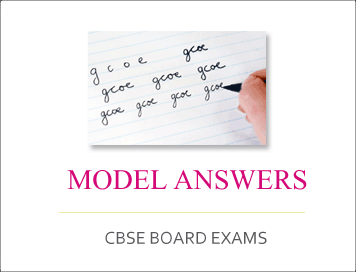
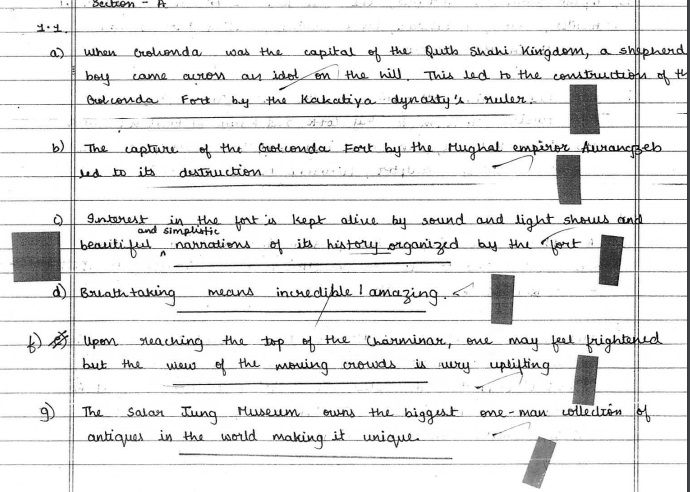

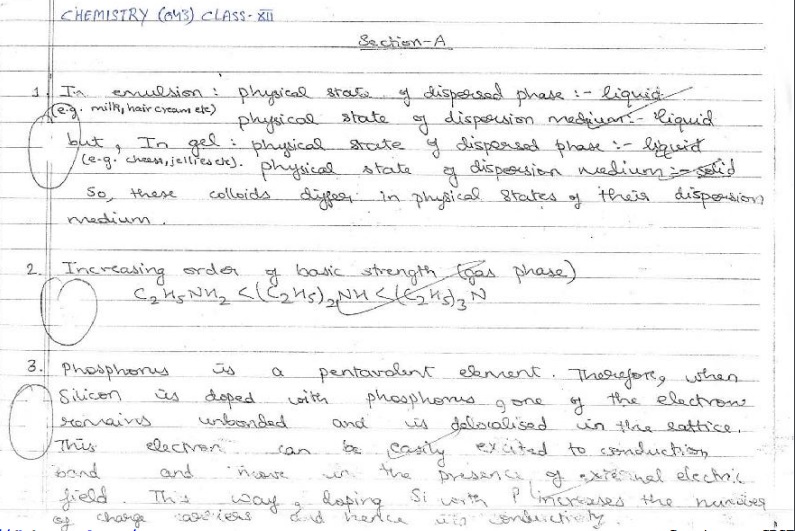



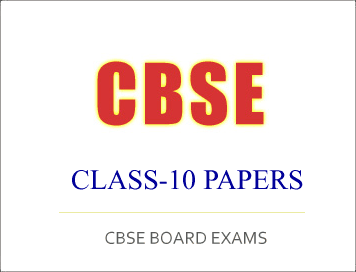
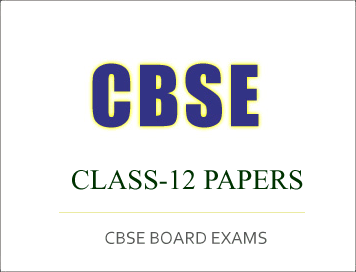
No comments:
Post a Comment